![]()
Amid a deathly silence, the crowd that filled the gallery within the Crown Court at the Manchester Assizes all waited with baited breath as to what sentence would ultimately be handed down to perhaps one of the most callous and cold hearted men to ever stand in front of his Lordship, Mr. Justice Branson.
With great indignation and under deep emotion, Mr. Branson began his passing down of his sentence.
“The story we have just heard is the most horrible to which I have ever listened – a cold, calculated and fiendish attempt to be avenged upon your wife through this unfortunate little girl. I am afraid no punishment that I can inflict upon you is adequate for your crime, but there is a maximum I can give, and I intend to give it. The sentence of the court is that you go to penal servitude for life.”
Mr. Justice Branson
And with these damning words, 32 year old, John Whalley would be led from the dock and sent to the waiting cells down below.
So, what had this man, John Whalley, done to have found himself being sentenced within Crown Court at the Manchester Assizes and why was the judge so damning in his condemnation?
For this we need to step back to January 1921 and to the marriage of Maud Wildman to John Whalley. Twenty five year old Maud had already been married, to a man named Joseph who was twenty eight at the time, but he was killed whilst on munitions work in Scotland on the 10th November 1918.
She had already given birth to Agnes on the 5th of June that same year, but the death of Joseph would mean that Agnes would ultimately never get to know her father.
Five years after the death of Joseph, Maud met John Whalley, a 32 year textile machine fitter for a company called Howard & Bullough’s. He was a good looking man who was seemingly well-built and with sandy coloured hair and by all accounts he was apparently a good ‘catch’ for any woman.
He had lived with his parents at 15 Claret Street, just a few minutes’ walk from where he worked and whilst he may have at the time been a relatively good employee at work, behind closed doors within his own home, he had his drawbacks that included not just a fondness for liquor, but it was reported that he had a wild temper that would often surface with violent outbursts.
But, he must have had something good going for him as on Easter Saturday, 1921, he would marry Maud and it seems that both Maud and John had known each other since childhood.
Not too long after becoming married, Maud and her now 3 year old daughter, Agnes, would move into the home of John’s parents at number 15 Claret Street, but it wouldn’t take long for Maud to find out for herself, if she didn’t already know, as to how abusive her new husband could really be.
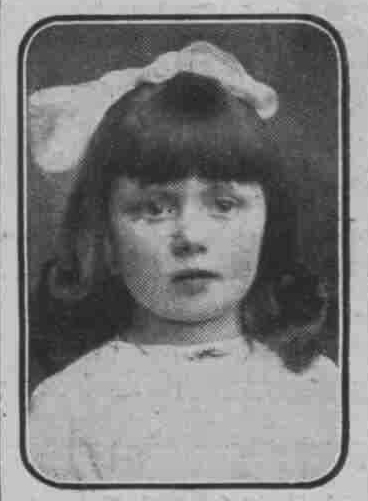
Agnes Wildman 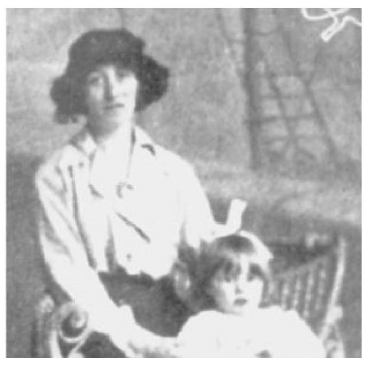
Maud and Agnes 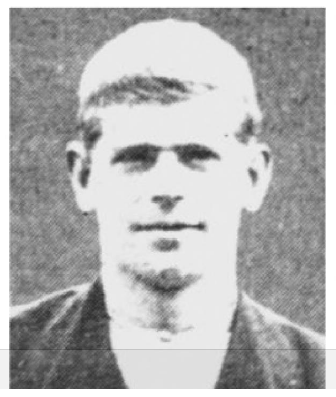
John Whalley
Things got so bad that by September 1922, Maud, Agnes and John would move out of his parents and become lodgers with 66 year old, Miss Sarah Ann Horbury at number 12 Victoria Street – just a few minutes’ walk from where they had been staying on Claret Street. It was supposed to be a fresh start for the couple, but things would only get worse for Maud and Agnes.
John would, on a regular basis, show considerable ‘passion’ as the newspapers would later report, towards Maud as well as that of Agnes and during one incident, the police would be called to their home to break up an argument. John would be charged with a minor disturbance and warned of his future conduct.
Miss Horbury would tell of how it was a relatively straight forwards arrangement with Maud and John and she had rarely been involved with any quarrels the couple may have had. However, she would later go on to say that it was clearly obvious that their relationship was deteriorating and rows where a norm between the couple and she would also tell of John’s drinking habits and how it was effecting the family as he would often come home drunk and treat Maud and Agnes badly.
John would often be heard threatening his family, and during one drunken outburst he had threatened to kill Maud. Maud, in her defence, was a strong willed woman and would on plenty of occasions stand up to her husband. But perhaps, and unwisely one could say, she may have planted a seed of revenge in John’s mind by yelling at him during one fight the couple where having,- “You will not take these from me!” and “You can’t rob me of these!” – in reference to whilst taking beatings from her husband, he will never be able to rob her of her livelihood – her hands!
The rows and arguments would continue right up until Monday, September 17th 1923 when things would finally spiral out of control.
Maud, who had been working as a weaver at nearby W. F. Chambers and Sons, Woodnook, arrived back to her lodgings at around midday to find John sitting in the kitchen.
Food was at a minimum so it came as a shock to her that John had eaten everything they had had the previous evening. Some food was meant to have been left for their lunch the next day, but John, the selfish man he was, only thought about himself.
“Why did you eat it for your supper last night!” she shouted at him.
Unconcerned, John replied; “Because I can please myself.”
Fuming at his ways and finally having enough, Maud told John; “I cannot stand this, I shall have to leave you.”
Standing up from the table, John looked at Maud and in a sharp tone replied; “Damn well, and get left!”
Maud then left the house, making out that she was going back to work but instead she would walk to a neighbour’s house nearby. Shortly after, she would watch as John walked past the window. Knowing it was safe to do so, she then went back to number 12 Victoria Street to collect some of her clothing as well as those of her daughter, Agnes.
With clothing and other personal items now at hand, she took them to her sister’s house at number 31 Clement Street that was situated only a couple of minutes’ walk away from her lodgings at Miss Horbury’s house.
Later that evening, Maud visited the local police station and after explaining in some detail as to the abuse she and her daughter where receiving at the hands of John, she took out a summons against him for alleged persistent cruelty and asked for a separation order against him.
The following morning, Maud, after sending Agnes off to school over at St. Marys, Woodnook, she would set off to work as usual, obviously unaware as to what tragic events would soon follow.
At around 3.20pm that afternoon, John made his way over to St. Marys, the school where Agnes was present at and after speaking to the mistress of the infant department; John told her that he needed to take Agnes out of school so she could go with him and her mother over to Rishton, Agnes was reluctantly allowed to leave with John.
There wasn’t ever to be a reunion with Maud or any trip over to Rishton. Instead, John walked with Agnes back towards number 12 Victoria Street and the lodgings he was staying at with Miss Horbury.
Inside the house, Miss Horbury was upstairs but she could hear Agnes shouting; “Mother! Mother!” It seems that Agnes had thought that her mother Maud, was somewhere in the house.
Hearing the child’s voice, Miss Horbury shouted down, “Hello?” before making her way downstairs but no sooner had she made her way to the bottom, she was struck with a heavy blow to her forehead, knocking her to the ground.
Shaken from the blow to her head, she was then dragged into the kitchen where she would be kicked and punched several times. Despite the effortless attempts to defend herself, each time she tried to get off the floor she would be punched and kicked back down.
Despite the beating she was receiving, she managed on one occasion to see who her attacker was. It was John!
“Now then, see what you have done!” she screamed as she tried to crawl to the back door. John pulled her back and carried on with the beatings until Miss Horbury became unconscious.
With Miss Horbury out of the way, John would turn his attention to young Agnes who had seen him fighting in the stairway as well as the kitchen.
Taking her by the hand, he led Agnes into the front living room where he then asked her to sit on a rug close to the fireplace.
John then made his way over to a set of drawers that where situated in one corner of the room. Opening one of them, he then made his way back to where Agnes was sitting.
What he did next would forever haunt not only Agnes herself but also all those who would witness the brutality at first hand.
Around 4.00pm, Miss Horbury had somehow mustered the strength to escape from the kitchen whilst John was inside the living room. Regaining consciousness, she managed to make her way to number 18 and to the home of the Withnell family.
Inside, Alice Maria Withnell, wife of Percy Withnell, was sat in the kitchen talking with an aunt, when a faint knocking sound on the door was heard. However, none of them thought anything of it until the knocking sound appeared again.
Alice went to investigate only to be shocked upon opening the door. Miss Horbury lay there almost unrecognisable. She was covered in blood, her hair was disordered and matted and one of her eyes was completely closed. Blood was coming from an open wound on her head and she had suffered horrific facial injuries.
Immediately, Miss Horbury was taken into the kitchen and made to sit down. Assistance was quickly called for in the form of Dr. Brook and when asked how she had got into such a state, she could barely speak with just a murmur of “I’ve lost my teeth.”
At around 4.15pm, 49 year old Mrs Mary J Parker, who resided at nearby 26 Ormerod Street had paid a visit to see her friend, Alice at her home, at which time Miss Horbury was also in the house. After seeing Miss Horbury in such a battered state, Mary said to Alice, “I can’t stay here ; I must go out.”
Mary was clearly frightened at what she was witnessing and became very upset. Making her way home, she would sit herself down on a chair behind the front door in the living room. Rachel Seddon of 6 Victoria Street, after witnessing the events taking place at number 18 and after noticing Mary making her way home looking upset, would go and check on Mary to see how she was feeling.
Entering Mary’s house, she inquired if she was feeling ill, to which Mary said yes. Pouring a glass of brandy and handing it over to Mary, Rachel then went to open the back door to let some fresh air into the house but unfortunately, Mary’s condition didn’t seem to improve.
Meanwhile, a delivery driver by the name of Walter Wilson, whilst making his rounds on Victoria Street saw John Whalley walking past the front window of number 12 looking in a frenzied condition. He then made his way to number 18, presumably there was some commotion at this point which alerted him to the fact something was seriously wrong, and after seeing Miss Horbury for himself he ran to some factory offices where he then phoned for the police.
Whilst waiting for the police to arrive, Walter went back to number 12 Victoria Street, but when he tried to open the front door, he found it bolted shut. Walter tried to force the door open but he was unsuccessful in doing so. He then made his way to the back of number 18 before returning to the back of number 12, where he now found the back door also fastened. We can only assume John had noticed Miss Horbury now missing and had closed the back door, placing the bolt over it.
Two police officers soon arrived at the Withnells house – Police Constable Maudsley and Police Constable Flegg. On arriving and after witnessing the condition of Miss Horbury, they quickly made their way around to number 12.
Surprisingly, they found the front door slightly ajar, presumably after Walter Wilson had tried to force it open, and with a couple of forceful pushes, they managed to make their way into the house.
I doubt any kind of training could prepare anyone for what both police constables where about to discover but on September 18th, 1923 – the term ‘days of horror‘ would truly mean just that.
As they made their way into the front room, poor Agnes was resting on her knees on an hearth-rug opposite the fire. She was trying to lift herself up off the floor using only the stumps on her arms. Both her hands had been severed from her wrist and were lying about a yard away and under a table and two large pools of blood had formed on the rug where she was resting.
“I don’t live here, he brought me.” where the first words Agnes spoke upon the police constables arrival.
Police Constable Maudsley went over and picked her up before placing her onto the sofa. Here, he helped her with a glass of water as Dr. Brook was called for by Police Constable Flegg.
PC Maudsley then went to look around the rest of the house and soon found John Whalley in the kitchen. Whalley was lying on his back on the gas boiler with his feet in a slop stone. Upon checking, he found one end of a gas tube inserted into his mouth with the other end connected to a gas outlet. He also found that John had a large gash to his throat.
PC Flegg, who had followed PC Maudsley into the kitchen instantly smelt gas so he managed to turn it off and remove the tube from Whalley’s mouth before PC Maudsley dragged John off from the boiler, dropping him onto the floor.
Dr. Brook arrived not to long after, attending to Agnes who was in an obvious state of shock. The bleeding had slowed down and it seems that by Agnes trying to get to her feet by using the stumps on her arms, this had prevented much more blood loss and therefore saved her life.
The doctor put a temporary dressing on her wounds and after reassuring her, he then went to attend to John Whalley. The police had already began putting dressings around his throat and it seemed that Whalley was also coming around due to the fresh air now coming into the kitchen.
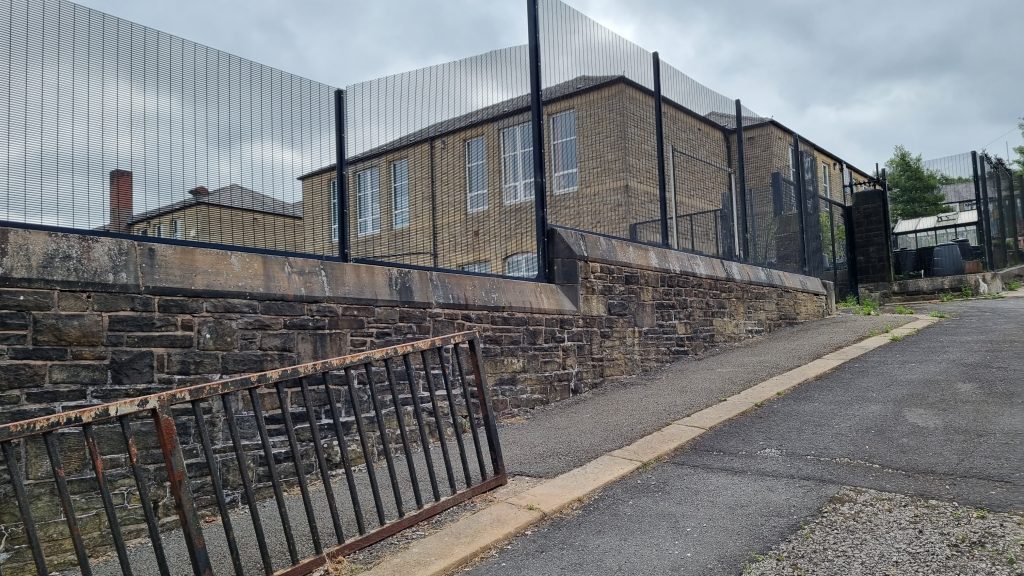
St. Marys School, Woodnook 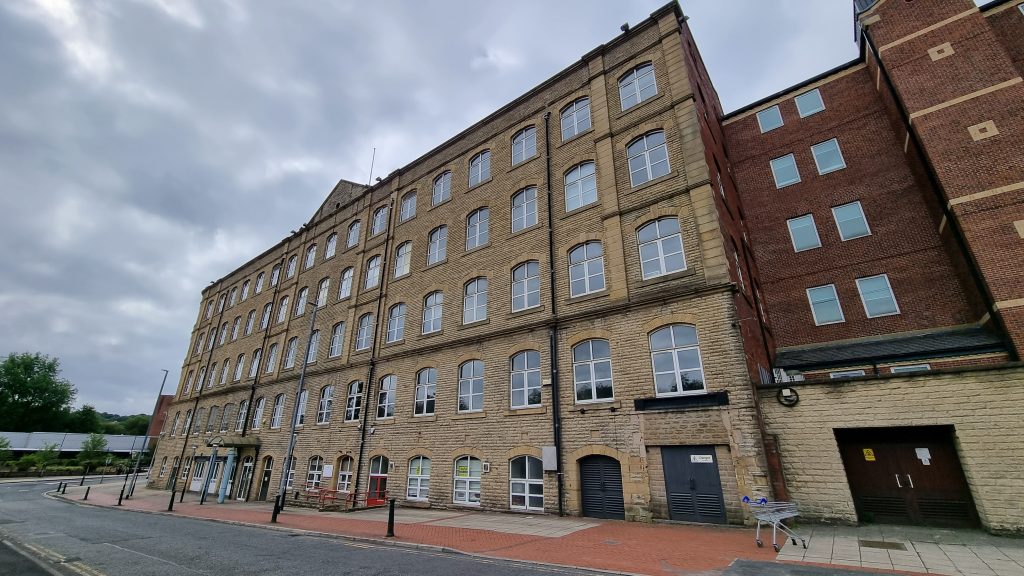
The Globe, formally Howard & Bullough’s
The news of the attack on Agnes would soon make its way to Maud, her mother who was working at Messrs. Chambers mill which was only a short walk away from where the event tragically took place. Obviously, everything came as a complete shock to her and upon entering the house, she would be held back by two police constables who warned her that something terrible had occurred.
Meanwhile, Inspector Walling, who had sent both police constables Maudsley and Flegg to number 12 Victoria Street after receiving a telephone call, had himself arrived at the scene after hearing of the horrific events unfolding.
Examining the premises, he found a large pool of blood behind the back kitchen door, with four hair pins amongst it. There were splashes of blood half-way up on the inside of the back door and there were also splashes of blood on the wall, between the back door and the staircase. A pool of blood was also noticed in the gas stove, and several small pool of blood in various parts of the kitchen floor.
It didn’t take long for Walling to also discover a coal shovel which was nearly covered with more blood as well as human hair, similar to that of Miss Horbury’s.
Back in the front room, he found more blood, this time on the rug close to the fire and it is here he came across shaving stick, brush and a blood stained razor.
Inspector Walling would place John Whalley under arrest and after both Agnes and Whalley’s wounds had been attended too by Dr. Brook, he had both of them transferred to the infirmary at Accrington Victoria Hospital to be attended to.
As for Dr. Brook, he would be called for by Rachel Seddon just after 4.20pm as she had become worried about Mary’s health. After attending to Agnes and Wheeler, he would make his way over to 26 Ormerod Street and on his arrival, he found Mary in a state of collapse and unconscious. Despite his best attempts, Mary would die just ten minutes later with the cause of her death being down to heart failure due to severe shock after seeing Miss Horbury in such an horrific state.
Over within Accrington Victoria Hospital, Dr. Wheeler, Police Surgeon arrived shortly after 4.30pm and the first time he saw Agnes was whilst she was in the operating theatre. As already mentioned, both her hands had been completely severed from the arms but he also noticed several other wounds to her body. Her right arm had an incised wound two inches long down to the bone and roughly 1.5 inches above the severed end. There was a contusion over her left hip bone 3 inches by 2 inches long and there were several small contusions and abrasions on both legs. It was obvious to Dr. Wheeler that these were defence wounds as Agnes had clearly tried to fight off John Whalley during the attack on her!
Wheeler would also attend to Miss Sarah Ann Horbury at around 5.15pm. He found her suffering from a fractured nose and extensive contusions to her face, particularly to the left eye, nose and chin.
There were three incised wounds at the back of the head, each two inches long. The back of her neck also contained several bruises and between the shoulders. There was a contusion 6 inches by 3 inches on the front right thigh and on the side of the left thigh there were two contusions, one six inches by three inches and other two inches by two. Both wrists and arms also had several cuts and abrasions.
Whilst attending to Miss Horbury, it was clear to Dr. Wheeler that she was suffering from profound shock and was still in a semi-conscious state.
Dr. Wheeler would also check in on Whalley, but he was semi-conscious at the time so he left him until around 8pm, by which time Whalley was fully conscious. Speaking to him, Dr. Wheeler asked Whalley if he knew what he had done. He simply said “Yes.”
“Why did you do it?” Dr. Wheeler then asked.
“Jealousy; I wanted to get at the mother through the child.” replied Whalley.
In hindsight, Dr. Wheeler should have known better. Whalley had been placed under arrest by Inspector Walling and therefore he should have been cautioned before being asked any questions relating to the crime. In fact, this would be brought up by Mr. Harry Backhouse – Whalley’s defendant, at an upcoming hearing on the 8th November.
On Thursday, 20th September, the inquest into the death of Mary Jane Parker would take place within Accrington Town Hall. Fred Parker, husband of Mary, would confirm the deceased as being that of his wife and that he had last seen her alive at around 1pm on Tuesday, 18th September. He would also tell the coroner that Mary had enjoyed good health for much of her life up to September 1920 when she suffered from a seizure and was attended to by Dr. Greenwood over the course of several days.
She seemed to get better and was able to attend to household duties. She remained in relatively good health for the next three years up until Saturday the 15th September 1923, just three days before the attack on Agnes, when she had complained of having palpitations of the heart, but they seemed to pass off towards the evening and she didn’t complain about them again.
Alice Withnall as well as Rachel Seddon would both speak about seeing Mary on the day of the attack on Agnes and how Mary had taken it badly. Dr. Brook would also give evidence and would end by telling the Coroner that she had sadly passed away within ten minutes of him arriving at her house, saying the cause of death was heart failure due to shock.
In recording a verdict of “Death from natural causes, ” the Coroner said that all the evidence he had to offer, and could only return a verdict in accordance with the medical evidence – that Mary died from heart failure due to shock from seeing Miss Horbury.
Just over a week later and on Wednesday September 26th, Inspector Walling had Whalley removed from the Victoria Hospital and brought back to attend a special court hearing within police station.
“You are charged with feloniously, unlawfully and maliciously causing grievous bodily harm with intent to maim one Agnes Rhodes Wildman by severing both hands with a razor at the house, 12 Victoria Street, Accrington, at or about 4pm on Tuesday, 18th September 1923.” read out Walling to Whalley.
After being cautioned, Whalley, who appeared with his throat bandaged, replied “I have nothing to say.”
The Chief Constable said other charges against Whalley would be made but at a later date as all witnesses would not be fit to give evidence for some time.
Asked if he had any objection to a remand, Whalley, who looked pale and dejected shook his head and said, “No.”
A month passed and at 6.10pm on Wednesday, 7th November, Inspector Walling spoke again with Whalley to charge him with the assault of Miss Sarah Ann Horbury.
“You are charged with feloniously wounding by means of a coal shovel on Sarah Ann Horbury at the house 12 Victoria Street, Accrington at or about 4pm on Tuesday 18th September, with intent thereby to murder her.”
Again, after being cautioned, Whalley repeated what he had already said. “I have nothing to say.”
On Wednesday, 3rd October, and despite a deluge of rain that had fallen on the town of Accrington for several hours, a long queue of people, mainly women and girls, had all congregated outside the Accrington Town Hall all trying to gain a glimpse of Whalley, who had been brought from Preston Gaol by train and taxi earlier that morning.
And as soon as the police court doors were opened, the public poured in, with all limited space quickly occupied and many people seemingly content with standing.
When Whalley was brought up from the cell, he was quickly brought into the dock, so quick in fact that the waiting crowd who had all clambered for a glimpse of the man would unfortunately only get to see the back of his head as he stood to hear the charges about to be put to him.
Chief Constable George Sinclair would tell the magistrates that Whalley had been on remand since Wednesday, the 26th on the charge of grievous bodily harm with intent to maim Agnes Rhodes Wildman. Mr Sinclair would also mention the attack on Miss Horbury and how both Agnes and Miss Horbury were still in hospital and would be for some weeks, therefore he did not wish to give any evidence against Whalley that day but would simply ask for another remand until Wednesday, 10th October.
Whalley, when asked by the Clerk if he had anything to say why he should not be remanded for another week replied, “No , sir.”
Whalley was at once removed from the dock, down the stairs and into the police station cells.
Meanwhile, a large crowd of women and girls were still waiting in the rain behind the police station in order to see Whalley should he be removed that way, and when a police taxi made its way to collect him, the crowd booed, shouted and hissed as he was escorted into the taxi. The noises could clearly be heard within the police court such was the anger of the crowd.
As prisoners could only be remanded for a week at a time, and with key witnesses still not being fit enough to attend the court, the clerk suggested that it would be better not to hear the case on a regular court day but instead to fix a special day when all available witnesses could attend. Plus, the crowds outside the court were seemingly getting bigger with each hearing and the chorus of disapproval each time Whalley made an appearance could be easily heard from within the police court.
However, it seems that this ‘special day’ was never arranged and Whalley would be placed on remand a total of six times, each time appearing in the Accrington Courts with huge crowds congregating outside. Inside, the noises of their disapproval could easily be heard.
On Thursday, 8th November 1923 – John Whalley was brought before the magistrates in Accrington and committed for trial on two charges. The first was wilfully causing grievous bodily harm with intent to maim his stepdaughter, Agnes Rhodes Wildman, aged five years, by severing both of her hands with a razor.
The other charge was of feloniously wounding Sarah Ann Horbury by means of a coal shovel with intent thereby to murder her.
Chief Constable George Sinclair rose from the court and before calling out Whalley’s name, he warned all those present that if there was any display of temper or any interruptions whatever during the progress of the case, he might have to ask the magistrates to clear the court. He would ask anyone who thought they could not control their feelings to leave the court at once, because they must understand there must be no interference during the progress of the hearing.
The Town Clerk, Mr. A. H. Aitken prosecuted on behalf of the Director of Public Prosecutions and Whalley was defended by Mr. H. Backhouse of Blackburn.
Agnes would be brought into court and an unsworn statement was taken while she sat on her mother’s knee.
But seeing her attacker in court, Agnes cried on several occasions, and during one episode, Whalley himself seemed to be affected by her reaction towards him.
Eventually she would give her evidence and answered Mr. Aitken in a distinctive manner.
“My father fetched me from school and took me to Miss Horbury’s. Miss Horbury was upstairs, and my father ‘fighted’ her when she came down. He then took me into the front room, and got a razor out of a drawer, and cut my hands off on the carpet in front of the fireplace.” Agnes would say.
P.C.s Maudsley and Flegg would both speak of the events that that took place on the 18th September as would Dr. Brooks and Dr. Wheeler.
Defending Whalley, Mr. Backhouse, seemed interested in the conversation that took place between Police Surgeon Dr. Wheeler and that of Whalley on the day Whalley was admitted into the Victoria Hospital.
“Do you agree that before you questioned this man you ought to have let him know that were questioning him as the Police Surgeon?”
“I did not ask questions as a Police Surgeon.” replied Dr. Wheeler.
“How then? Just as professional curiosity?” asked Mr. Backhouse.
Pausing, Dr. Wheeler would reply; “No, not out of professional curiosity. It might be curiosity, but not professional curiosity.”
Dr. Wheeler knew exactly where this cross-examining was leading too as Mr. Backhouse continued with his questioning.
“I may take it that you did not tell prisoner that anything he might say would be taken down in writing and might be given as evidence upon his trial?” he would ask.
“No.” replied Dr. Wheeler.
Perhaps Dr. Wheeler was a little naïve by asking Whalley questions and the case against him would most certainly had been compromised if something like the Human Rights Act had been instigated back in 1923!
The trial would last for 3½ hours and without leaving the Bench, the Chairman, Mr. R. Rushton, would say that the magistrates were satisfied there was a prima facie case to go before the Assizes.
In reply to the question by the Clerk as to whether he wished to make any statement which would be taken down in writing and might be given at his trial, Whalley answered a subdued, “No, sir.”
The Chairman then replied, “Then you will be committed to take your trial at Manchester Assizes on both charges.”
On Saturday, 8th December, one of the most horrible and soul stirring cases of inhuman cruelty in the annals of crime was dealt with by Mr. Justice Branson in the Crown Court at the Manchester Assizes.
The case of John Whalley was one of the most sensational that had ever been brought before a Judge and yet it would only last some twenty-five minutes from start to finish.
At 10.30am that morning, Mr. Justice Branson would take his seat and at 10.55am, Whalley would know his fate and be removed by the wardens to the cells below.
Prosecuting, as instructed by the Town Clerk of Accrington, Mr. A. H Aitken; Mr. Edward Wooll would detail the horrific events that took place back on the 18th September. There were tears in the eyes of Mr. Justice Branson as well as the jury as they heard the full and horrific details of the attacks on both Miss Sarah Horbury and that of five year old Agnes.
Signs of grief sounded throughout the court as Mr. Wooll spoke of how Police Constables Maudsley and Flegg had found Agnes resting on the stumps of her arms. Two woman began to cry, as did, and surprisingly that of Whalley who cried almost throughout the hearing.
Details would emerge as to how Whalley had been acting up to and including the 18th September, with Miss Horbury telling the court that after Whalley had been issued with a summons by a police constable, she would ask him to leave her house due to circumstances. He declined to leave on the day and the following morning she had called him at the usual time for him to get up, again, he refused.
She then called him at 11 o’clock to which he finally got up, and he later then went out to the Poplar Club in Accrington. Whalley spent an hour there, playing billiards and drinking beer. He later left the club only to return between two and three o’clock in the afternoon and had another pint of beer.
The jury would then hear that Whalley had made his way over to the Church of England School at Woodnook, where Agnes was a pupil.
What came next would rock the jury and all those within the Crown Court as details of how he had cut off the hands of Agnes would come to light.
Even though it may at first seemed that both hands had been severed with extraordinary skill, on the right hand it seems Whalley had begun to cut at the wrong place because he had missed the joint and was cutting into the bone. Changing method, he then started to cut at where the joint actually was and therefore successfully perpetrating his purpose.
As for Agnes, it was clear that she had tried to defend herself as she had suffered from cuts and abrasions to her hands, arms and hip and the court would also hear that, as painful as it must have been for Agnes, there could be no doubt that the compression caused by her resting on the stumps had slowed down the bleeding and that with the low circulation produced by shock, this had prevented her from bleeding to death.
With regards to Whalley’s mental condition, some thought it may have been possible that he was suffering from some form of mental weakness, but after careful inquiries had been made, there was no trace of insanity within his family circle. Also, Whalley had been under close observation whilst staying at the Victoria Hospital for two weeks and during that time he showed no symptoms of insanity.
And as for his defence team, they now had the difficult task of trying offer some form of evidence as to what provoked Whalley into committing such terrible acts.
Mr. Gilbert Jordan, counsel for the defence appeared at the instance of Whalley’s father, who thought that whatever the charge there might be against his son, he should be represented at the trial.
Whalley had pleaded guilty to serious charges and it therefore now seemed an idle act to even suggest that he had not committed the acts in which he was charged, as the evidence was overwhelming!
Therefore, there could only be one possible plea, other than the plea of not guilty, and that was to to ask the jury to return a special verdict, which was known as “guilty but insane” and it was now the responsibilty of his Lordship to consider Whalley’s mental condition.
As already mentioned, the length of the trial would last barely twenty-five minutes and after hearing all the evidence and summoning up and taking into consideration the mental health of Whalley as asked by Mr. Jordan, Mr. Justice Branson, visibly upset from what he had heard, condemned Whalley for his evil actions.
“The story we have just heard is the most horrible to which I have ever listened – a cold, calculated and fiendish attempt to be avenged upon your wife through this unfortunate little girl. I am afraid no punishment that I can inflict upon you is adequate for your crime, but there is a maximum I can give, and I intend to give it. The sentence of the court is that you go to penal servitude for life.”
Upon hearing his sentence, Whalley’s face turned as pale as death and he was hurriedly removed from Court. His father, who was present and listening intently was naturally upset and agitated by the sentence imposed on his son, but it seemed, as far as could be, he was prepared for the worst outcome.
As for Agnes and what the future would hold for her, a fund had been set up by the-then Mayor, Councillor Woolley, with the aim of raising around £2,000. He himself had begun raising funds by donating ten guineas of his own money and the owners of the mill where Agnes’s mother had worked – W. F. Chambers, donated an extremely generous hundred guineas.
Sympathy for Agnes travelled far and wide – and by February 1924, the fund had swelled to a staggering £6,024 – the equivalent of around £375,674 in today’s value.
Many fund raising events took place from football matches to music concerts and along with contributions and subscriptions, money came in not only from local townsfolk but from people all around the world.
One story that we have uncovered tells of how an eleven year old boy by the name of David Greenwood, living at West Fitchburg, Massachusetts, U.S.A had donated the proceeds of his savings from working as a caddie at a golf course after his school hours. He had read the story of young Agnes and wanted to do something to help and the letter he had sent to the Blackburn Times contained a five-dollar gold piece, around £300 in today’s money, to be used for the benefit of Agnes.
Our research also found that sympathy for Agnes had reached the width and breadth of Britain, with one lady from the South of England writing to the Chief Constable of Accrington, Mr. George Sinclair, offering to adopt Agnes, promising her a good home.
Her letter goes on to say; “Perhaps I could have the little girl for a holiday to see if we love one another, and I would shelter her from all cruelty. I should like you to tell me what will become of her in any case.”
Another lady had also written to the Chief Constable, wanting to refund two children from nearby Oswaldtwistle, who had given a week’s spending money to the Mayor’s fund.
“Do you know the names of the two little Oswaldtwistle children who gave their week’s spending money to the Mayor’s fund at the Town Hall for the little girl. I am only a lonely widow, but I will refund the money they gave and so make up their loss if you can furnish me with their names and addresses.”
Because the Mayor’s fund had far exceeded everyone’s expectations, a special meeting took place on Wednesday, 6th February 1924 within Accrington Town Hall, to consider the formation of a body of trustees to administer the funds raised.
The new Mayor, Alderman F. Lord presided and said nobody could not forget Miss. Sarah Horbury and it was suggested that some £700 should be set aside and paid in weekly instalments to her.
Deeds where drawn up which outlined how the funds raised would be given to Agnes and in part, it was suggested that in womanhood and should Agnes be married, the money could be used for the maintenance, education and a start in life for her children up to 20 years after Agnes’s death. The balance would then be handed over to the Victoria Hospital.
Grants would also be made available in the cases of Mrs. Parker and Mrs. Withnail.
The meeting endorsed the proposal to appoint as trustees Miss Agnes Wildman, Miss M. Macalpine, the Rev. A. W. Greenall, Mr. R Crossley, Mr. F. Cunliffe, Mr. James Kenyon, Mr. George Sinclair and with the Mayor of Accrington for the time being.
I guess no punishment would ever be enough to make up for what Whalley had done to poor Agnes and Miss Sarah Horbury on that fateful afternoon of September 18th 1923. Out of pure selfishness and simply wanting to exact “revenge” on his wife, Maud, he had changed the lives of many people from the evil actions he had committed.
Agnes would go on to live a long and happy life, getting married to a man called Arthur Weaver in July 1939. Arthur was employed as an electricity rentals clerk for the local government. Both Agnes and Arthur would stay with her mother, Maud at number 110 Dill Hall Lane, Church and despite some setbacks, she became an avid painter with some of her work being sold locally. Arthur sadly passed away in October 1990 at the age of 75. Agnes would spend the last years of her life at Whinside Care Home at 310 Whalley Road, Accrington until her death in December 1997. She was 79 years old.
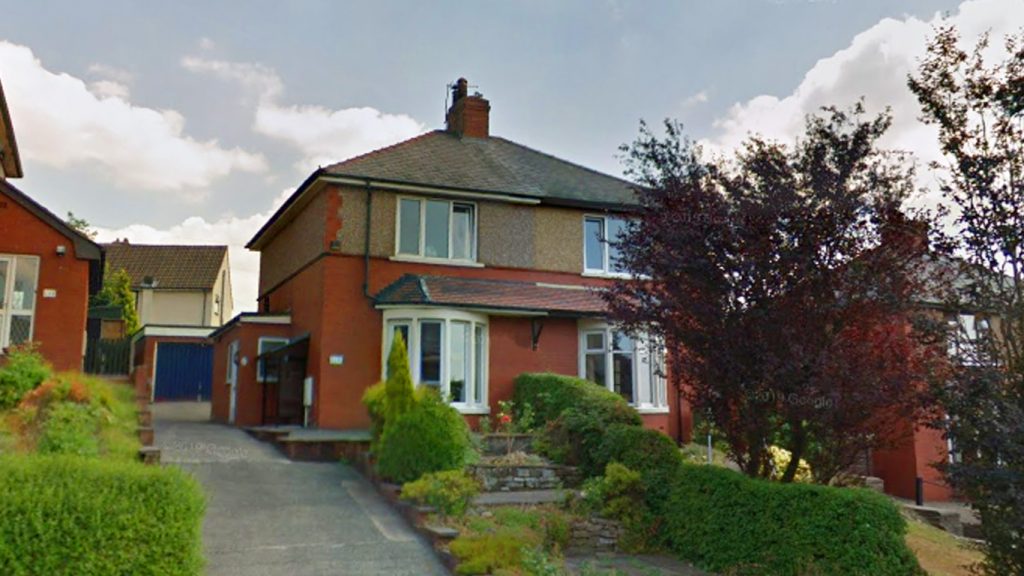
110 Dill Hall Lane, Church 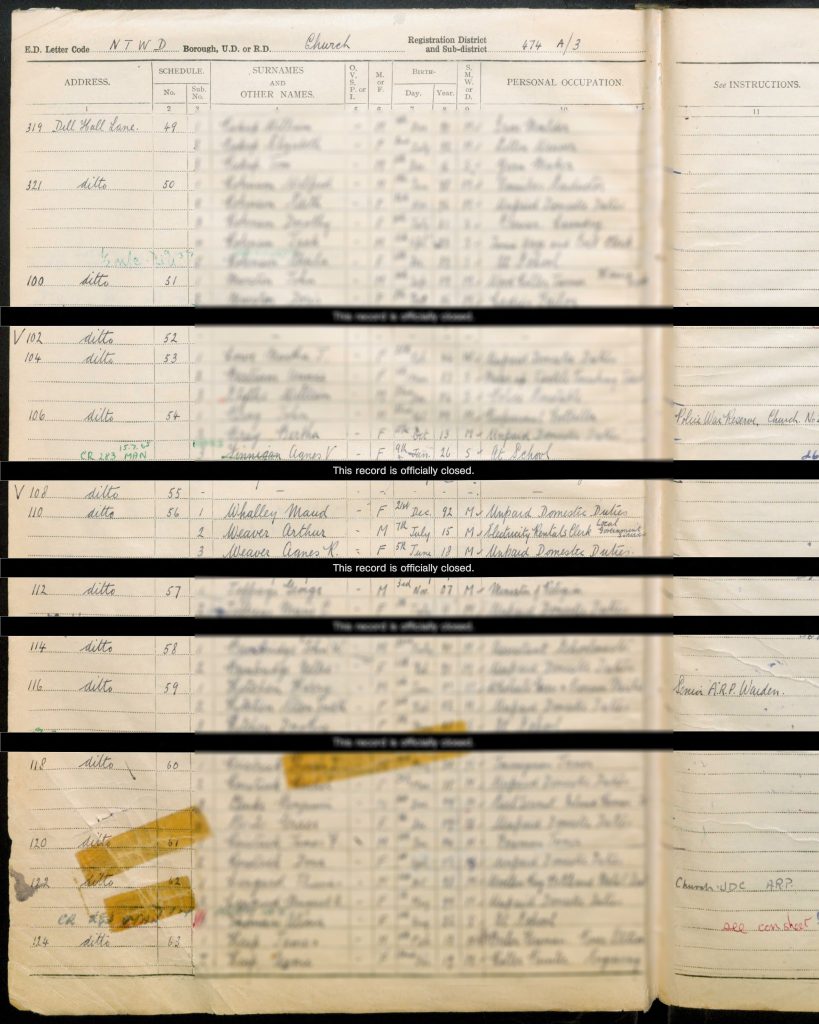
1939 Land Register 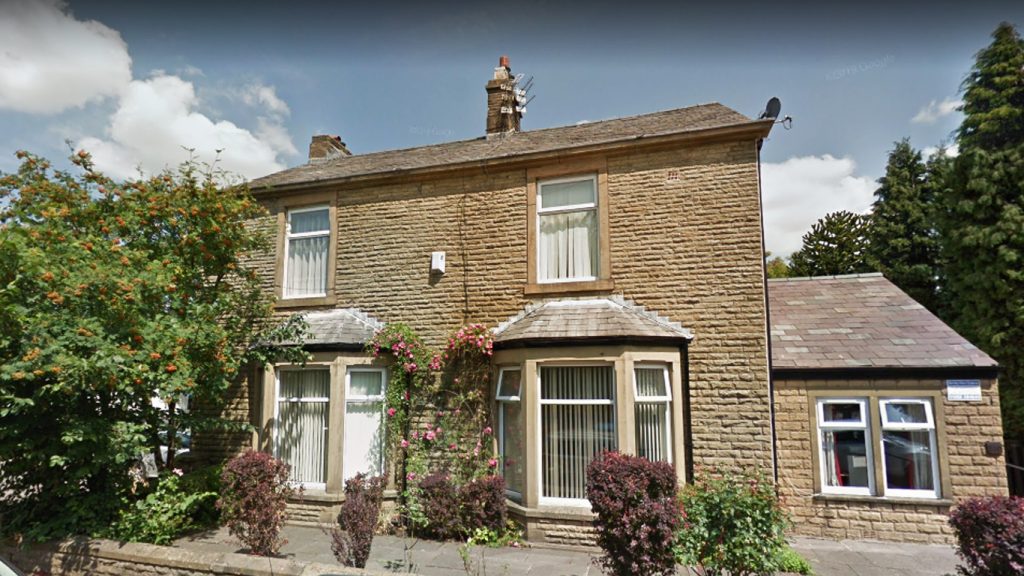
Former Whinside Care Home
It’s kind of sad to know that some of the people who saw her would simply know her as the ‘lady with no hands‘ and yet some of them probably never really knew the dark truth as to what happened all those years ago.
Sources used in this story;
Haslingden Gazette – Saturday 22 September 1923
Leeds Mercury – Wednesday 19 September 1923
Haslingden Gazette – Saturday 15 December 1923
Manchester Evening News – Saturday 08 December 1923
Hartlepool Northern Daily Mail – Friday 21 September 1923
+ many more courtesy of the British Newspaper Archive – www.britishnewspaperarchive.co.uk and www.ancestry.co.uk
Please follow me on social media;
Twitter – https://twitter.com/dohpods
Instagram – www.instagram.com/dohpods
Youtube – https://www.youtube.com/channel/UC1awBMK4u6luyrh3Ny9vhpg

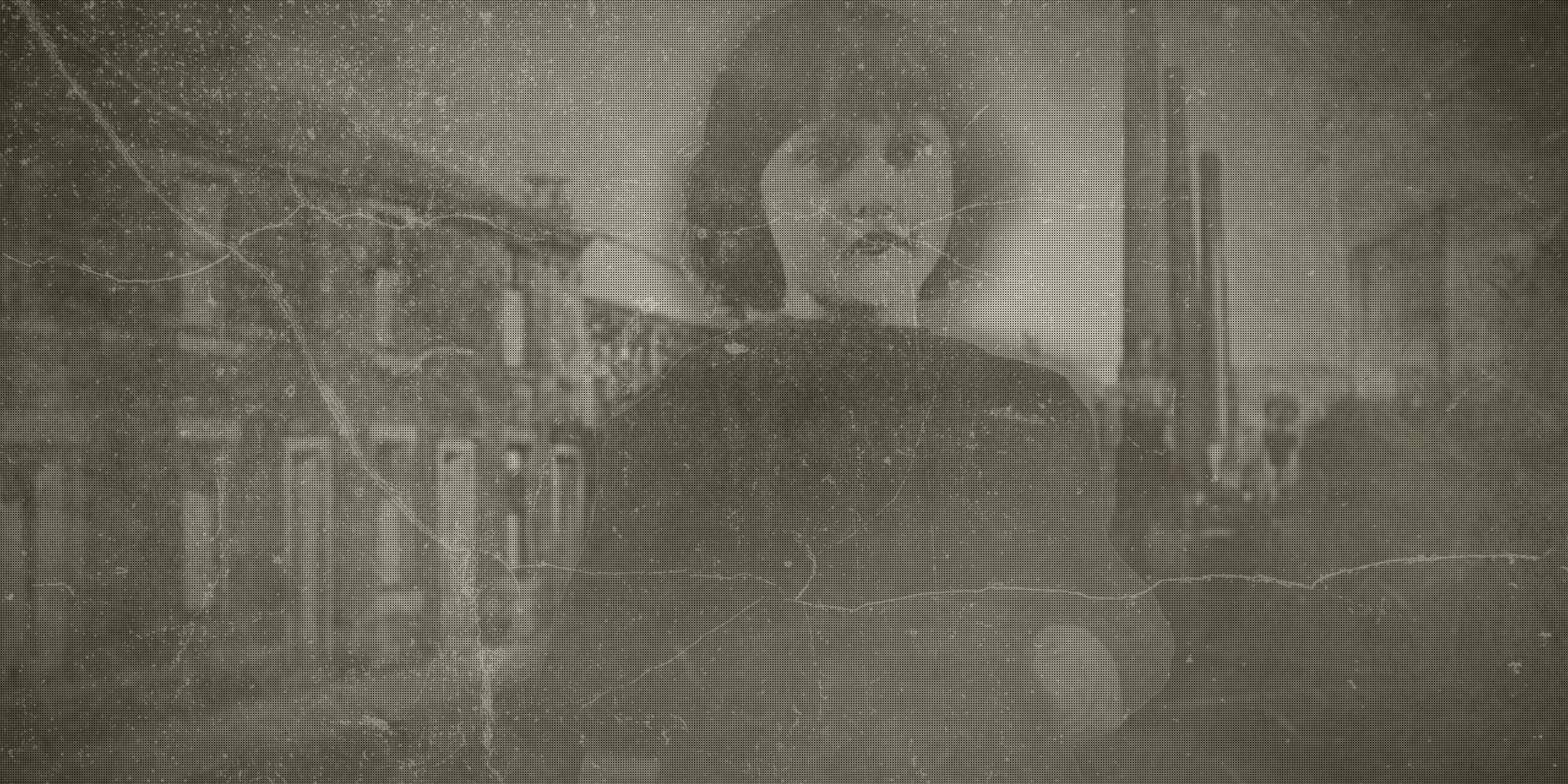
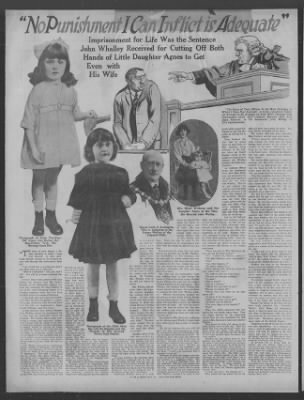
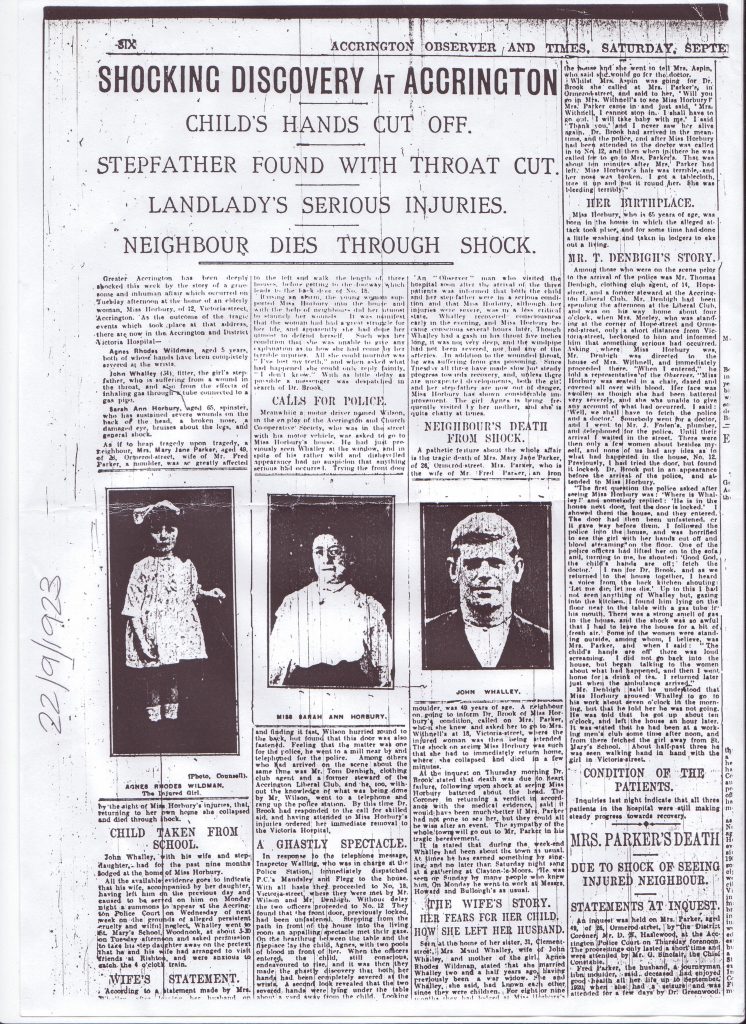
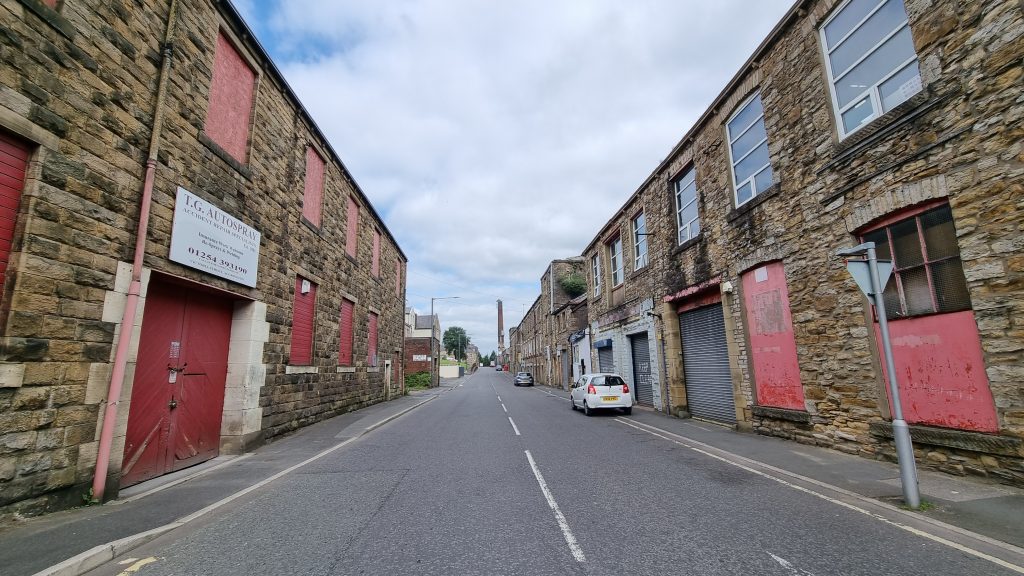
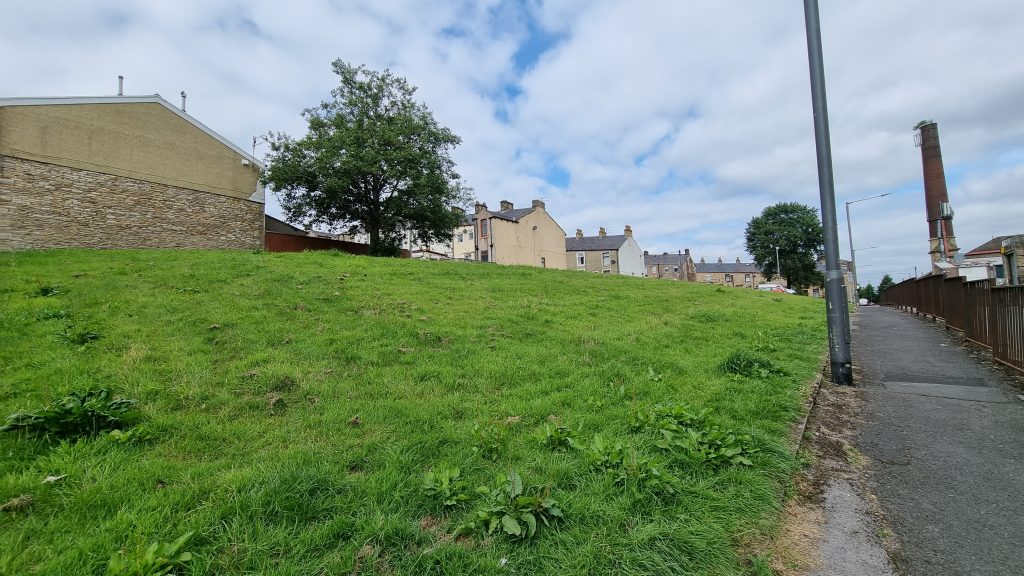
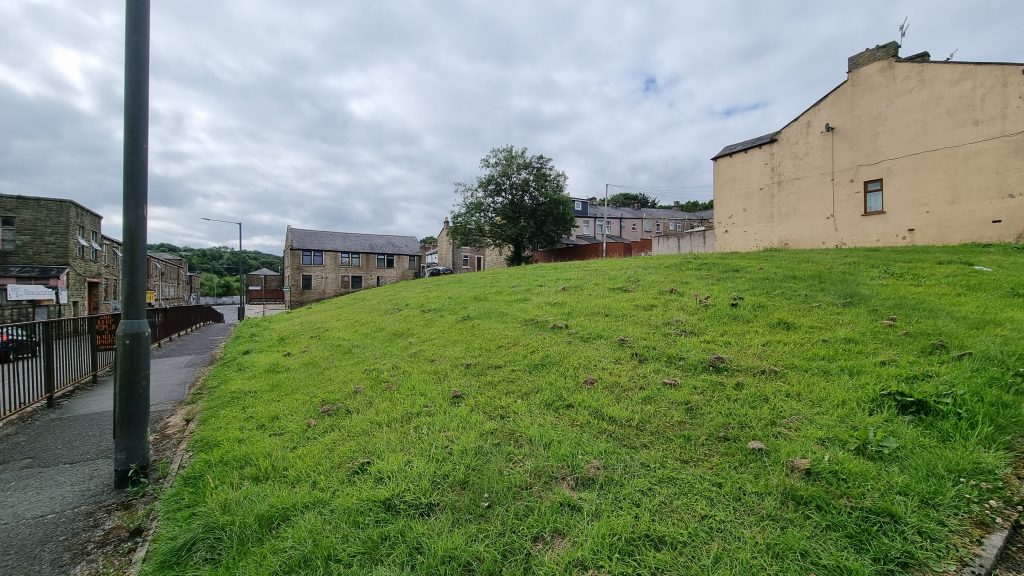
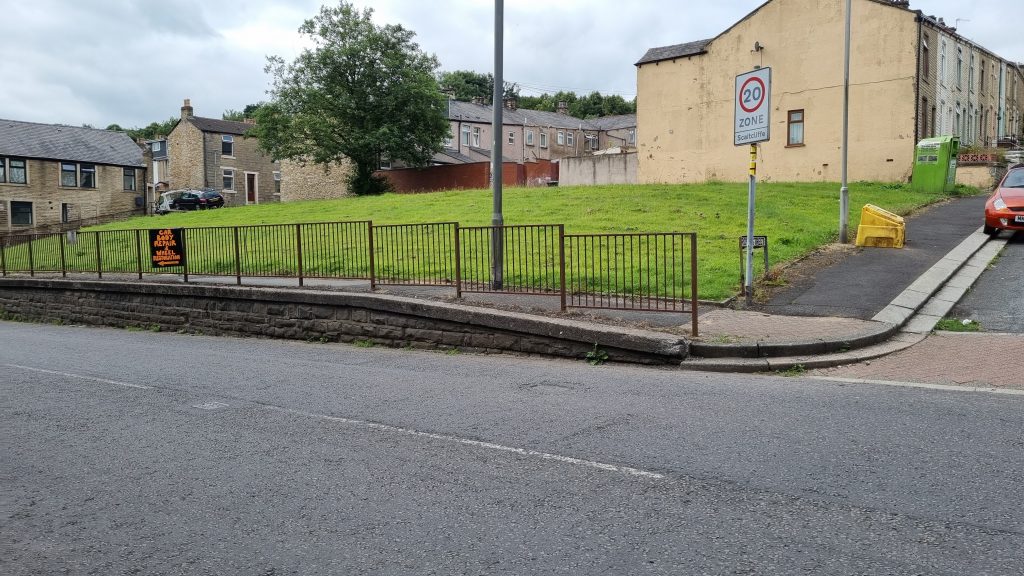
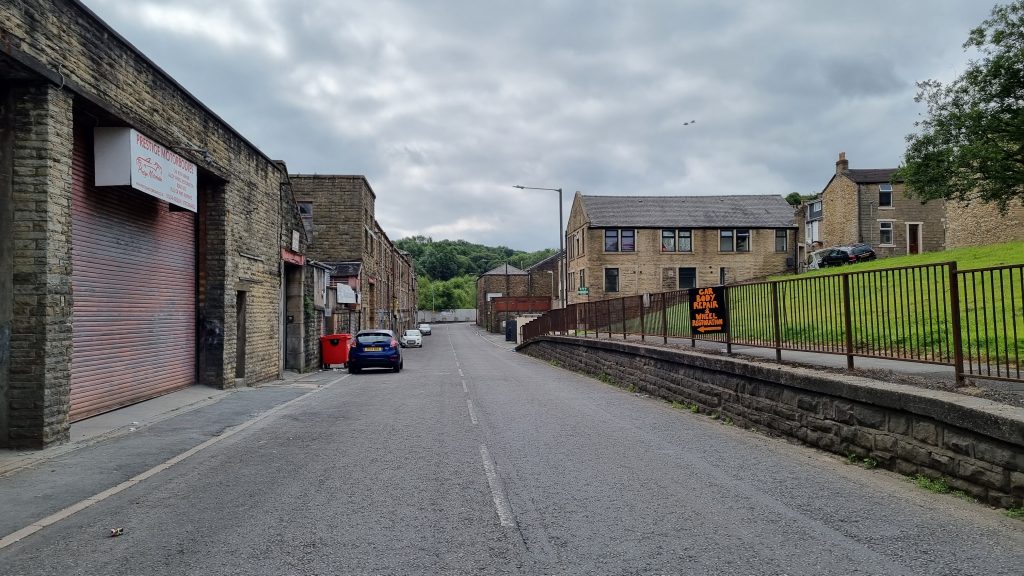
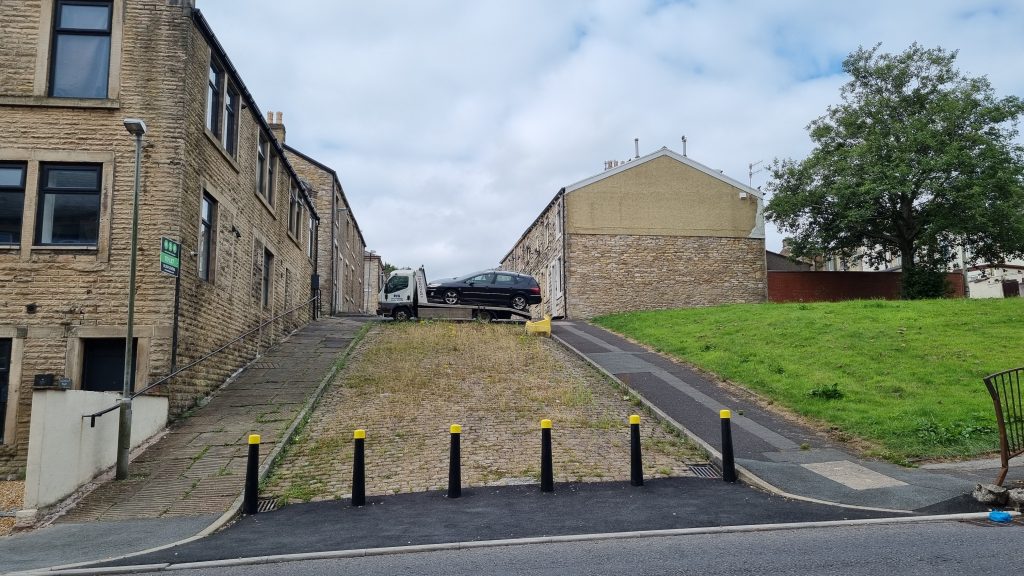
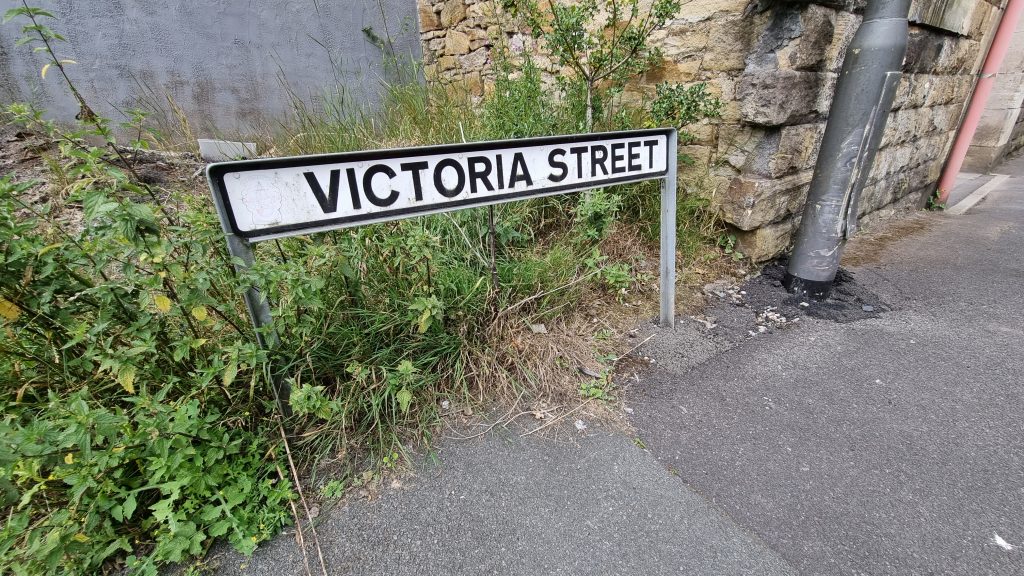
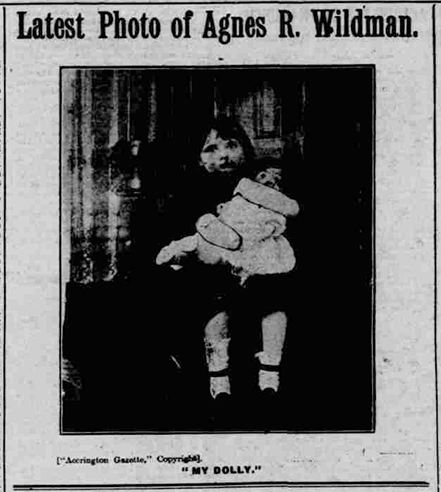
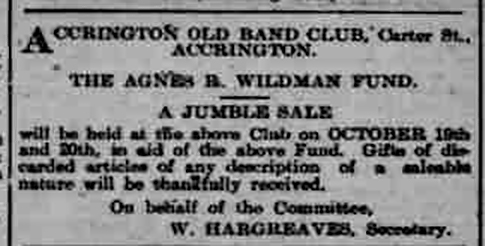
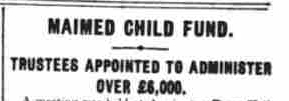
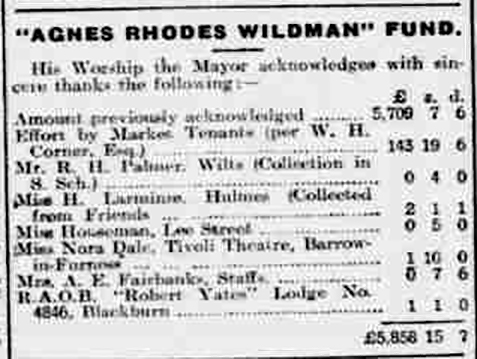
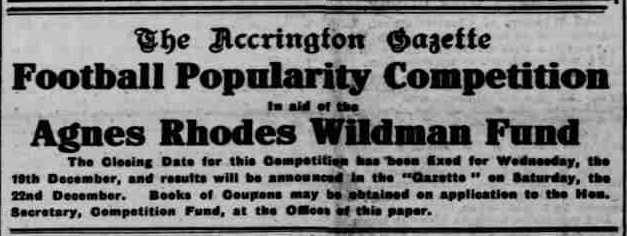
Leave a Reply